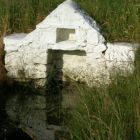Welcome
Welcome to the inaugural History of Kinsalebeg Website… More »
Latest News
The latest news on website chapter releases & content updates…
Can You Help ?
How you can help in updating History of Kinsalebeg website… More »
Chapter Summaries
People & Families
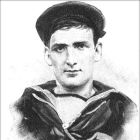
Stoker Lynch
Eddie “Stoker” Lynch from Monatray won a 1st Class Albert Medal for his bravery in rescuing a colleague when the H.M.S Thrasher foundered on the notorious Dodman Rocks in September 1897. This story recalls the story of “Stoker” Lynch from the time of the tragic accident until his burial with full naval honours in Kinsalebeg Church in February 1899.
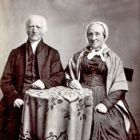
Fishers of Pilltown
The Fisher family of Pilltown was mainly associated with the corn milling business of Pilltown Mills in the 18th and 19th centuries. This energetic Quaker family was also involved in famine relief, anti-slavery, aborigine protection, land reform, newspapers and female emancipation. This history traces their lives from their arrival in Youghal in 1692.
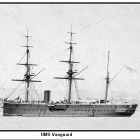
Navy Men
The seafaring parish of Kinsalebeg has a long and proud naval tradition. We trace the naval careers of thirty Kinsalabeg men who were involved in campaigns such as the Battle of the Falklands, the Battle of Jutland, the Dardanelles Campaign, the Battle of Gallipolli, the Suez Campaign, the Baltic Campaign, East Indies and China Stations. The history primarily covers the period up to and including WW1.
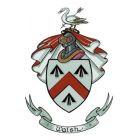
Walshs of Pilltown Part 1
Sir Nicholas Walsh Senior was the patriarch of the Kinsalebeg family known as the Walshs of Pilltown. He established the large Walsh landholdings in Kinsalebeg based around Pilltown Castle and the Manor of Pilltown. He went on to achieve high office as a legislator and politician culminating in his appointment as Chief Justice (of the Common Pleas) in 1597 and as Speaker in the Irish House of Commons in 1585.
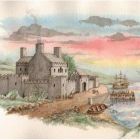
Walshs of Pilltown Part 2
The Walshs of Pilltown took an altogether more revolutionary position in comparison with the political route of their founding father Sir Nicholas Walsh Senior. They lived through the difficult and violent 16th-18th period in Irish history. The history commences with Sir Nicholas Walsh Junior who was alleged to have started the 1641 rebellion with his declaration that he had obtained the support of King Charles I for the uprising. The history traces the lives of the fighting Walshs of Pilltown over a couple of centuries.
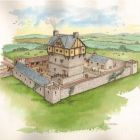
Dowdalls of Pilltown
Sir John Dowdall was a leading English military commander in Ireland during the reign of Queen Elizabeth I. Dowdall lived in Pilltown Manor for a period in the late 1500s and early 1600s when he was leasing Pilltown property from Sir Nicholas Walsh. He was military Commander in Youghal for a period and later became the Commander of Duncannon Fort.
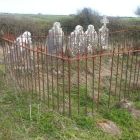
Piaras Mac Gearailt
Piaras Mac Gearailt was a highly regarded poet and was widely considered to be one of the most influential of the Jacobite and Deiseach poets of the 18th century. He was born in Ballymacoda but spent a considerable part of his life in Kilmaloo Kinsalebeg and died in the nearby townland of Lackendarra. Over fifty of his poems and songs survive to the present day. The most famous of his compositions is the Munster war song Rosc Catha na Mumhan which has been recorded by a number of present day artists.
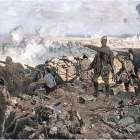
Rochs of Woodbine Hill
We attempt to trace the genealogy of the Roch/Roche family over twenty seven generations. Overview of the exploits of James “The Swimmer” Roch at the Siege of Derry to the medical military career of Col Horace Sampson Roch in the Boer War, WW1 and the Russian Civil War. It details the work of miniature painter Samuel Towgood Roch and the writings of Gothic novelist Regina Maria Roch.
Land, Places & Buildings

Ferrypoint
Ferrypoint is primarily associated with the ferry which operated for over seven hundred years across the dangerous stretch of water from Ferrypoint to Youghal. Many tragic ferry boat accidents took place off Ferrypoint and it was also the scene of many historical events from the sinking of the Duncannon to the arrival of Cromwell.
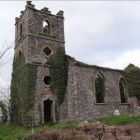
Kinsalebeg Church
Kinsalebeg Church near Ferrypoint has a history which stretches back over seven hundred years. It was initially as a Catholic Church but was declared Church of Ireland from the time of Henry VIII. The history records historical references to the church together with available information on the clerical succession list down the centuries. It also includes information on some burials and marriages which took place in the church.
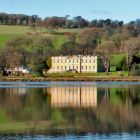
Landlords and Land Ownership
This history covers major land ownership in Kinsalebeg over a period of approximately fifteen hundred years commencing with the Déise tribe in the 5th century. It includes details from the lives of the families and individuals who were major landowners in Kinsalebeg at different stages of history including the Déise, FitzGerald, De Clare, De Badlesmere, Tiptoft, Earls of Ormond, Earls of Desmond, Walshs of Pilltown, Bernards of Bandon, FitzGeralds of Dromana, Earl of Grandison, Villiers-Stuart and Smyths.

Houses of Kinsalebeg
This is a historical summary of some of the better known houses in the parish of Kinsalebeg. It includes details of individuals and families who resided in the houses over the centuries. Details are included of Monatray House, Woodbine Hill, D’Loughtane House, Prospect Hall, The Turret, Manor of Pilltown, Erasmus Smith’s School and Pilltown Castle.
Stats, Lore & Events

Population Changes
Kinsalebeg lost all its inhabitants in the appalling Black Death plague of 1351. The population recovered to reach an all time high of 2889 inhabitants in 1841 but this decreased to 408 inhabitants in 1961 mainly through famine and emigration. The population has slowly increased to 481 inhabitants in 2006 and this overview traces some of the ups and downs in population in Kinsalebeg and neighbouring parishes over the centuries.
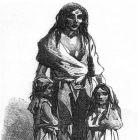
The Great Famine
The Great Famine from 1845 onwards had a serious impact in Kinsalebeg and surrounding parishes. The history relates the ecumenical approach to famine relief in the parish whereby the Church of Ireland, Catholic and Quaker communities of the parish cooperated in their attempts to alleviate the worst effects of the famine. The Rev William Wakeham was particularly active in coordinating famine relief until his death in 1847 which was as a result of famine induced disease.

Events in History of Kinsalebeg
This chapter contains details of a series of interesting events or stories which occurred in the History of Kinsalebeg. These events are mainly extracted from the overall Kinsalebeg history and are covered in greater detail elsewhere in the relevant chapters. We will add a new story or event each week and hopefully when completed it will form a series of interesting stories about Kinsalebeg over the centuries. The series starts with the Storming of Pilltown Castle on 18th August 1646.
 Follow
Follow


